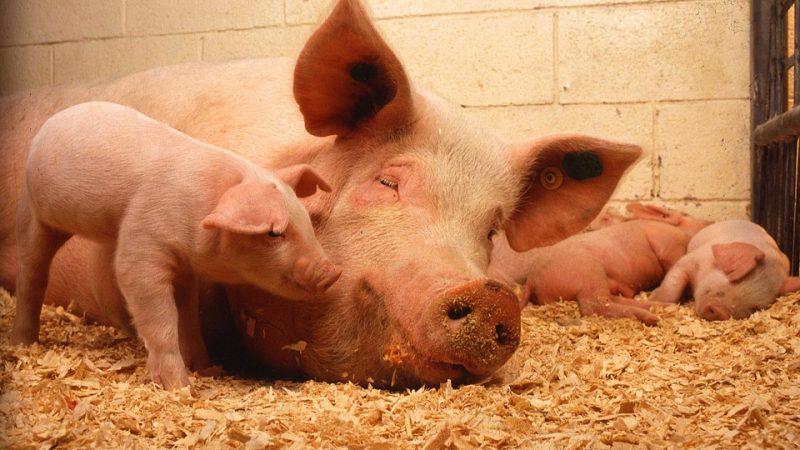Pink, fat and healthy – that’s how we visualize the ideal pig. But what if Pink Beauty’s stomach is upset? There can be a range of consequences from stress to enteritis, from reduced fattening performance for the industry to a decline of meat quality for the consumer. In a recent survey conducted by the Austrian Centre of Industrial Biotechnology (acib), University of Natural Resources and Life Sciences (BOKU) and IPUS GmbH Rottenmann, scientists sort to find out how acidification during feed digestion can be managed and which natural feed additives support animal health and welfare.
An average of 85 pounds – that’s the amount of pork consumed by Austrians per year per capita. But to provide the consumer with guilt-free roast pork, meat industries have to fulfil ever stricter requirements: the consumer desires excellent meat quality with a high percentage of lean meat, whereas on industrialized farms the aim is to optimize performance, health and stress resistance of animals. Having the correct animal feed can meet the needs of both the consumer and the farmer. Up to now, it has been a trial-and-error method: despite feeding a feed mix tailored to the current fattening stage, intestinal acidification or digestive disorders can still happen – going as far as diarrhoea and bowel inflammation.
What exactly are the roles of feedstuff components in this acidification, how micro-organisms and feed in the digestive tract correlate and which feed additives might control and lower a sometimes high ph-value: this is subject of current investigations by the Upper-Styrian company IPUS Mineral- and Environmental Technology GmbH, the Austrian Centre of Industrial Biotechnology (acib), Vienna University of Natural Resources and Life Sciences (BOKU)and other partners. acib examined the microbiome in pigs, took samples and simulated the various stages of digestion in a laboratory in order to find out which feed additive steadies the intestinal environment best.
The so-called “Migulators” show the best results: mineral bio-regulators, which are based on a certain variety of the volcanic mineral clinoptilolite, a natural product, serve to regulate biological and chemical processes. Used as feed additives, they lead to an increased animal vitality and metabolic functionality as they are an important buffer for ph-value. Thereby they perform two central tasks: On the one hand, its micro-mesoporous structure releases naturally contained soil nutrients and trace minerals (such as calcium, potassium, magnesium, zinc and iron) to the pigs’ intestines by ion exchange.
On the other hand, clinoptilolite’s pore surface adsorb harmful substances, such as heavy metals or toxins in the feed that are created by moulds as well as ammonia and ammonium. By relieving the pigs’ liver and meat fibres in particular, it leads to an improvement of meat quality on the consumer’s dining table. Another advantage: Adding zeolite preparations to fodder inhibits ammonia emission from animal manure, thus improving the microclimate in a pigsty. This has a positive effect on the stress resistance of piglets and leads to a reduction of injuries.
acib-investigations have also shown that the large external surface of “Migulators” serve as suitable housing for gut bacteria, as they promote growth and biodiversity of health-promoting microorganisms through a better bioavailability of nutrients. “Animal feed-Migulators act as a preventive support for animal’s health. Results are better feed utilisation, higher fattening performances, improvement of intestinal health as well as cost savings of veterinary treatmets.
As well as using the “Migulators”-technology in animal feed, it could be used in the whole nutrient cycle of agriculture. By lowering odor and ammonia emissions you create a better microclimate where nitrogen loss is reduced. Furthermore, the ‘Migulators’ in animal manure, rich in nutrients, makes it particularly useful in soil improvement, composting and fertilisation, releasing essential plant nutrients. Scientists are currently investigating how “Migulators” and their micro-organisms correlate and are certain that new products and applications could be developed to improve the whole process and to contribute significantly to animals’ health and environmental protection.
Picture credits: Pixabay
